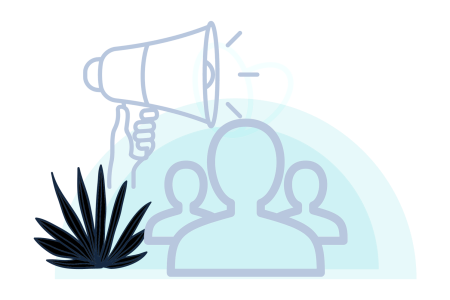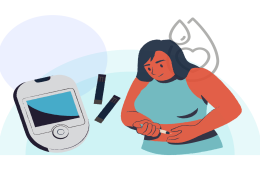Management of congenital heart diseases and digital health – Part 1
There are approximately 2 million individuals living with congenital heart diseases in United States.
Globally, there are 1.5 million new cases each year

Challenges faced by care providers and patients in management of congenital heart diseases
In this article, we will be discussing unique challenges that care providers and patients face in the management of congenital heart diseases.
Current epidemiology
Congenital heart disease poses a very interesting challenge to the healthcare community at large. Due to successful interventions and treatments, the population of adults with congenital heart disease has risen dramatically over the last 60 years.(1)
It is estimated that approximately 2 million individuals are living with CHD in the United States alone. (2) Worldwide, there are approximately 1.5 million new cases per year. (3) In areas where population have access to advanced healthcare systems, >85% of babies born with congenital heart disease are expected to survive to adulthood. (1)
Historical perspective
Treatment of congenital heart diseases has been fraught with complications but most if not all challenges have been solved with innovation.
Starting with surgical innovations outside the heart, such as resection of aortic coarctation, ligation of patent ductus arteriosus and shunts, surgeons have successfully treated infants and improved healthcare outcomes.
However, the major surgical challenge that remained was operating to correct deformities inside the heart – most significant was the challenge of maintaining blood circulation to the brain while the heart was open. After multiple experiments which led to creation of a bypass machine, surgeons were able to declare victory against this particular hurdle. (1)

These huge leaps in medical advancement have led to a significant change in patient outcomes. However, some challenges still remain for healthcare providers and patients.
Top 3 challenges for care providers
1. Chronic care provision
Currently, most cardiac interventions are not considered “completely curative”.(1) This means that patients with CHD often require long term follow-ups and special care considerations that allows care providers to keep a close eye on the disease progression.
Complications such as arrhythmias, endocarditis, pulmonary vascular diseases, ventricular dysfunction and reoperations are quite common(1), and if ignored, lead to significant morbidity and mortality. Therefore, long term survival is contingent on continuing medical surveillance. (3)
2. Training and advocacy
It is imperative that all healthcare providers, whether they are in primary, secondary or tertiary care centers, have adequate training to be able to detect early signs of deteriorating health.
Apart from that, all healthcare providers need to act as advocates for preventative care and wellness to ensure improved health outcomes in their patients.
Today more than ever, we need a new generation of healthcare providers who are trained to solve today’s problems with innovation-driven solutions.
3. Personalized care
Given the shortage of specially trained healthcare professionals, paired with increasing survival rates makes it difficult for healthcare providers (HCPS) to review every single patient. In cases of high volume of patients care providers often end up prioritizing patients with more immediate complications.
Every patient requires unique attention and advice and depending on the availability of specialists, they may or may not be able to receive it in good time.
Top 3 challenges for patients
1. Holistic care
There is a diverse complexity to the challenges that are faced by patients of congenital heart disease – ranging from their physical health, emotional health, social and economic wellbeing.
There are multiple structural hurdles that lead to these challenges for patients ,such as lack of adequate education about their disease condition, lack of access to quality care, delayed health seeking behavior, economic challenges that delay treatment, and social and psychological barriers.
CDC reports that children with congenital heart problems often feel that their condition prevents them from doing activities that other children do. These children experience more difficulty with learning, concentration, communication, self-care, gross motor skills than other children with special needs without heart problems. These kids also missed more school days and participated in less extracurricular activities. (2)
An absence of consideration for holistic approach to patient life and health might lead to poorer quality of life outcomes.
2. Public awareness and social support
Public awareness of CHD is still relatively low. As a result of this, patients often find themselves with little to no social support.
Community driven programs to increase awareness and to set up structures of support require efforts from multidisciplinary teams involved in patient care – from cardiologists, to nurses, to general practitioners to public health specialists.
It is worth noting that prevention strategies often go hand in hand with educational strategies. (4) It is just as important to spread awareness in society as it is to educate patients and their families.

3. Outcomes management
Patients with CHD are prone to a higher incidence of complications (mentioned above) and comorbidities such as hypertension, hyperlipidemia, diabetes, obesity, atherosclerotic disease, chronic kidney disease amongst others.
This requires special attention from a care provider who not only understands congenital heart disease, but also how these factors interplay with each other. (4) Access to these specially trained care providers might be another limiting factor for improving outcomes.
Conclusion:
It is worth noting that the advancements made over the last six decades have helped the community of survivors of congenital heart disease immensely. Continuing with the same tradition of facing today’s challenges head-on with a spirit of innovation and progress, will no doubt, lead us to even better outcomes for our patients.
In the second part of this blog series, we will discuss how health technology can solve these problems, and more specifically, how no-code can give us access to more solutions.
Bibliography
1. Warnes CA. Adult congenital heart disease: the challenges of a lifetime. Eur Heart J [Internet]. 2017 Jul 7 [cited 2022 Jun 9];38(26):2041–7. Available from: https://academic.oup.com/eurheartj/article/38/26/2041/2736256
2. Data and Statistics on Congenital Heart Defects | CDC [Internet]. [cited 2022 Jun 9]. Available from: https://www.cdc.gov/ncbddd/heartdefects/data.html
3. Perloff JK, Warnes CA. Challenges Posed by Adults With Repaired Congenital Heart Disease. Circulation [Internet]. 2001 May 29 [cited 2022 Jun 9];103(21):2637–43. Available from: https://www.ahajournals.org/doi/abs/10.1161/01.cir.103.21.2637
4. Adults with congenital heart disease present challenges, rewards for cardiologists [Internet]. [cited 2022 Jun 9]. Available from: https://www.healio.com/news/cardiology/20150821/j050_1710_01_news_print_1
Insights
-

No-Code Tools for Managing Mental Health and Burnout in Healthcare Settings
Read more“P4” is a term that is often associated with future of medicine – prediction, prevention, personalization and patient participation. Many current health related technologies have already started moving towards the future and many more innovations are yet to come, that will make the goal of holistic medicine true.
-

Impact of health technology on diabetes management
Read more“P4” is a term that is often associated with future of medicine – prediction, prevention, personalization and patient participation. Many current health related technologies have already started moving towards the future and many more innovations are yet to come, that will make the goal of holistic medicine true.
